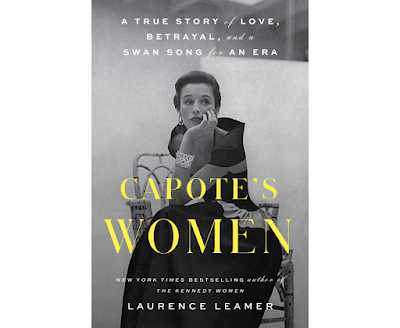Works by El Greco, De Witte and the Master of Frankfurt — seized
from the Vienna apartment of Julius and Camilla Priester in the early years of
the Second World War and rediscovered over the last 15 years — are offered in
London on 7 December
On a cold March morning in 1938, German troops
crossed the border into Austria and annexed the country. In the immediate
aftermath of the ‘Anschluss’, Austria’s Jewish population were subjected to
violent attacks. That early, uncontrolled ferocity soon gave way to a more
orchestrated aggression as the Nazis looted and confiscated art collections and
forced Jewish owners, who were frantic to leave the country, to sell their possessions
at knockdown prices.
Among those who found themselves on the brutal end of these
policies were the industrialist Julius Priester (1870-1954) and his wife
Camilla (1885-1962).
The couple were art lovers and had amassed a stunning collection of
Old Masters, particularly Flemish, Dutch and Italian artists, including Franz
Hals, Peter Paul Rubens, Jacopo Tintoretto and Anthony Van Dyck. The works were housed in their elegant apartment on the Ebendorferstrasse,
in Vienna’s historic centre.
Their immediate concern that spring, however,
was their own survival. Two weeks after the Anschluss, the couple fled Vienna
for Paris. By June 1940 they were in Bordeaux, where the Portuguese consul
Aristides de Sousa Mendes issued them with visas. A month later, they had
joined the thousands of refugees hoping to secure safe passage from Portugal to
the Americas.
The writer Erich Maria Remarque, author of All Quiet on the Western
Front, memorably recorded this desperate world in his 1962 novel The Night in
Lisbon:
‘The coast of Portugal had become the last hope of the fugitives to
whom justice, freedom, and tolerance meant more than home and livelihood. This
was the gate to America. If you couldn’t reach it, you were lost, condemned to
bleed away in a jungle of consulates, police stations and government offices,
where visas were refused and work and residence permits unobtainable, a jungle
of internment camps, bureaucratic red tape, loneliness, homesickness, and withering
universal indifference.’
The Priesters were lucky. That August, they crossed the Atlantic
aboard the SS Quanza to Mexico, where
they remained for the rest of their lives. From the safety of Central America,
the couple began making extensive efforts to trace their missing artworks.
It was revealed that, in the months after they
left Austria, the Gestapo — assisted by art appraisers — had inventoried the
couple’s apartment and begun removing works of art. Over the next four years,
their entire collection was confiscated.
This systematic stripping of Jewish belongings
led to vast warehouses being filled with priceless art and antiques. Most of
the Priesters’ collection was taken to the Gestapo’s centre for the
redistribution of Jewish property, on Krummbaumgasse in Vienna.
The Nazis had a clear vision, vigorously
upheld by organisations such as the Militant League for German Culture. They
were intent upon leading a national revival of Germanic art and culture, and
their tastes were extremely conservative.
Any confiscated art that was anti-realist or
created by a ‘non-Aryan’ was denounced and sold to fund the German Reich. Works
that met the Nazis’ narrow artistic criteria entered museum collections, were
held for Hitler’s proposed ‘Führer-Museum’ or found their way into the private
collections of prominent Nazi officials.
After the war, it was discovered that some of
the art appraisers who had worked for the Gestapo were now dealing privately in
Nazi loot. The Priesters learned that the art assessor Bernhard Witke had sold
their Tintoretto and an early El Greco masterpiece, Portrait of a Gentleman
(1570), above, while their highly prized Rubens, Man with a Fur Coat (circa 1630-40), was in the collection of
Nazi art dealer Julius Strecker, who was put on trial in 1953.
The court case attracted considerable media
attention, prompting Julius Priester to publish a list of 17 paintings still
missing from his collection. Among the works unaccounted for were the extremely
rare Interior of the Oude Kerk, Amsterdam (1655), by Emanuel de Witte, and a
half-length portrait, traditionally identified as the Emperor Ferdinand I, by
the Netherlandish Master of Frankfurt, below.
Sadly, the couple died before those works
could be recovered. ‘Getting restitution in the post-war era was an uphill
struggle,’ says Christie’s restitution expert Andrea Lehmann. For many Jewish
survivors, the problem was that, without photographs or documentation, it was
nearly impossible to establish proof of ownership.
The Priesters, however, did have photographic
evidence, which helped the not-for-profit Commission for Looted Art in Europe
(CLAE) to trace some of the paintings for their heirs. Founded in 1999, the
CLAE works to recover cultural property stolen by the Nazis.
In 2006, the CLAE identified the Priesters’
Master of Frankfurt at auction in London. Later, it discovered the El Greco and
the De Witte. All three are now offered in the Old Masters Evening Sale in
London on 7 December.
An unknown number of Nazi-era looted artworks
are still unaccounted for. ‘It would be impossible to speculate on how many
works of art are out there,’ says Lehmann, ‘but in recent years there has been
renewed momentum in identifying them.’
At a 1998 conference held in Washington, D.C.,
the governments of 44 countries committed to the principle of identifying and
tracing artworks looted between 1933 and 1945, and negotiating ‘just’ and
‘fair’ claims resolutions. As a result, many institutions and collectors have
become more proactive in engaging with the process.
Perhaps the most famous example of restitution
was the return of five Gustav Klimt paintings to the heirs of the Bloch-Bauer
family in 2006. This high-profile case did much to alert the public to the
issue, and has helped reshape the auction world.
‘At Christie’s we have a dedicated in-house
team of researchers and specialists who review works offered for sale and
engage with claimants and their advocates,’ says Lehmann.
https://www.christies.com/features/Reunited-three-Old-Masters-from-the-Priester-Collection-11985-1.aspx?sc_lang=en&cid=EM_EMLcontent04144B87Section_A_Story_1_0&COSID=42665747&cid=DM469087&bid=290329623











